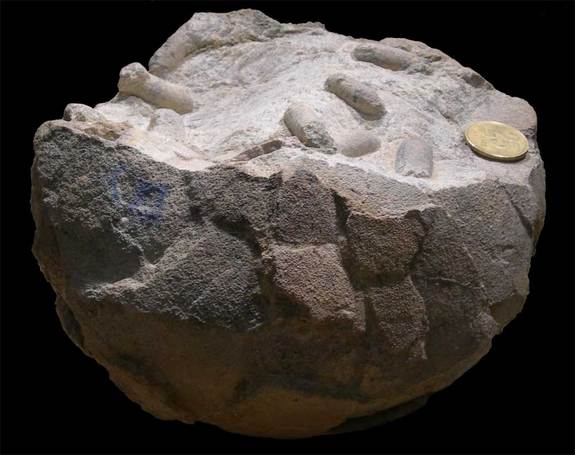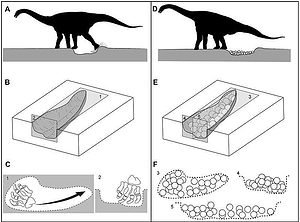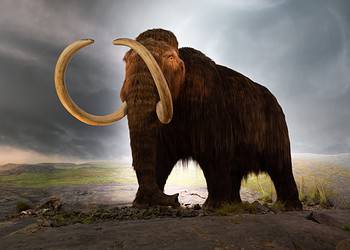
A recent discovery made by Argentinian paleontologist uncovered wasp cocoons hidden inside the 70 million year old fossilized egg of a titanosaur sauropod, suggesting that these ancient wasps used to dwell, consume and breed inside of them.
The find was made after researchers carefully analyzed one of the five titanosaur eggs uncovered back in 1989 in the Patagonia region of Argentina, and saw that one of the broken eggs contained tiny sausage-shaped structures. These structures were an inch long and 0.3 inches wide, making them a perfect match for the shape of a wasp cocoon, namely the Cretaceous wasp Rebuffoichnus sciuttoi, researchers believe.
Titanosaur was the largest creature to have ever walked the Earth, and while fossils of its eggs and that of wasp cocoons have been found before in considerate numbers, this is the first time they’ve been found together, suggesting a new relationship in the ancient ecosystem.

The wasps weren’t responsible for the damage of the eggs, however – they were too small and weak to break the thick titanosaur egg shell. Analyzing the various fractures in the eggshell, as well as other preserved insects found inside the egg, paleontologists theorize that it was open by force by some dinosaur scavenger who would’ve sucked its content dry. A second wave of creatures, likely ancient spiders, then came to dine on the now rotting egg, before finally the wasps attacked the spiders or even the initial scavengers. They would’ve then laid their eggs inside their targets’ bodies. The wasp offspring then spun their cocoons inside the rotting egg.
“Some cocoons have a truncated end that indicate the emergence of adult wasps,” study researcher Laura Sarzetti, of the Museo Argentino de Ciencias Naturales, told LiveScience.
“The presence of wasps, which are at the top of carrion food web[s], suggests that a complex community of invertebrates would have developed around rotting dinosaur eggs,” the researchers write in the journal article.
Now, although the bugs profited off the death of this particular egg, the critters were probably key in keeping titanosaur nests clean overall, added co-author Laura Sarzetti, another entomologist at the museum. For many dinosaurs, egg laying sites were kept in the same relative position for generations, and as such a cleansing of the decaying material left over from previous hatching was extremely important.
The newfound fossil cocoons are described in the July issue of the journal Palaeontology.






